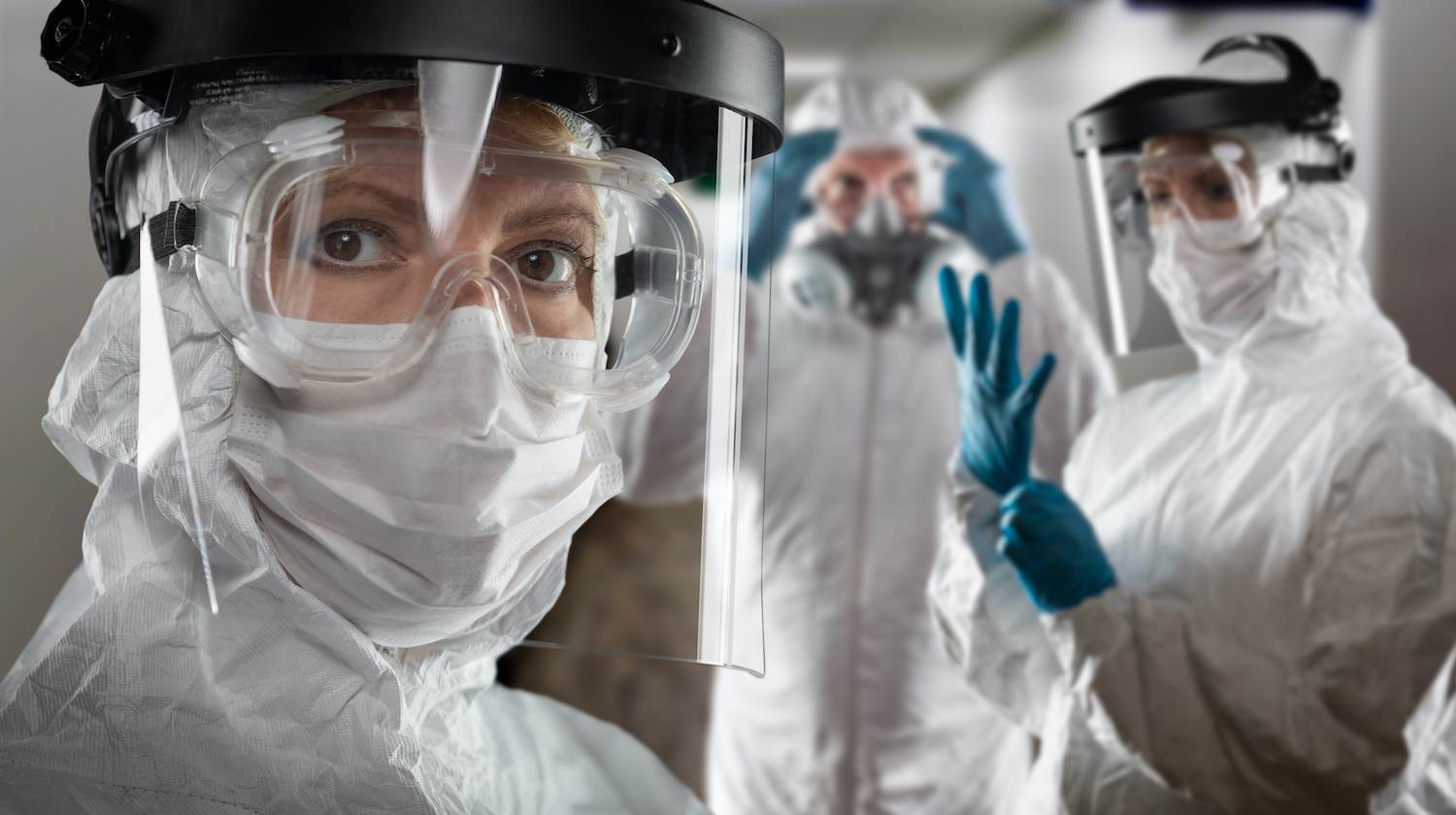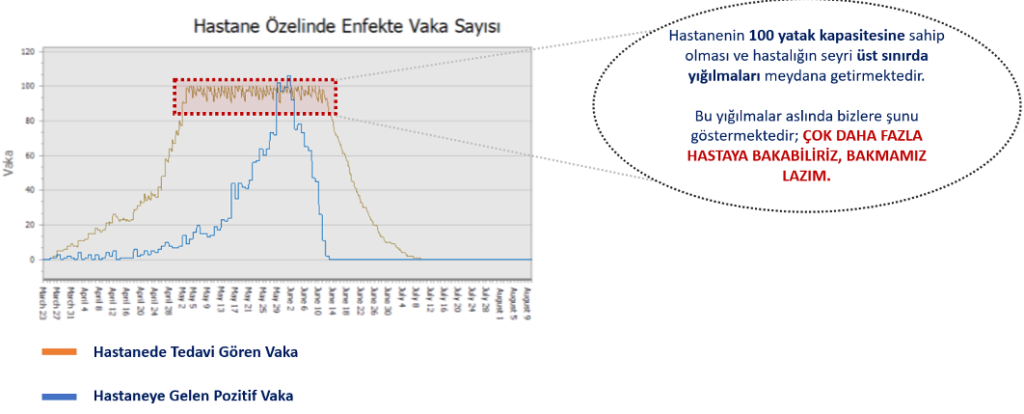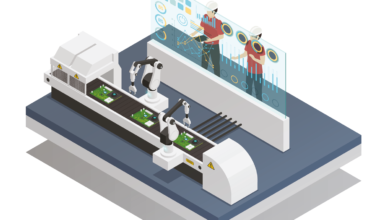Enterprise Resource Planning for Pandemic Hospitals

In an article shared by the John Hopkins health organization in 2001, it was pointed out that in the event of a possible global pandemic, health institutions worldwide would be inadequate, and critical resource stocks such as gloves, masks, and suits would even be depleted. Although it is thought that this warning was taken into account, we now see that the scale of the current pandemic is powerful enough to surpass the measures taken.
Gloves, masks, and suits are the most important resources for hospitals and healthcare workers, which are our strongest shield against the pandemic. So what is the possibility of facing a resource shortage in today’s conditions? More importantly, to what extent is the inability to provide necessary services to patients due to the depletion of resources?
Let’s not forget that the ability of a healthcare institution to combat a pandemic is directly proportional to the number of resources it has. Therefore, our healthcare workers should never experience a shortage of resources. How can we achieve this? How can we control the resource inventory against an unpredictable enemy like a pandemic?
In the model designed using Simio simulation software, the analysis of how effectively a selected hospital can control its resources against the potential influx of patients is being conducted. In addition, the impact of compliance with quarantine measures on these resources and the contributions of any improvements in critical resource stocks to our patients and hospitals are presented within the model. Inventory control of critical resources such as gloves, masks, suits, and ventilator devices is vital for our patients.
The “Infectious Diseases and Resource Planning Model” is designed to help healthcare providers, government agencies, and civil society organizations better plan for pandemic diseases. The model analyzes the need for the critical resources mentioned above against the population of a society and the infection rate within that population.
To ensure accuracy, the model uses real-time data such as the transmission factor (R0) of COVID-19 and recommended social distancing measures by the WHO. The model also uses data such as the population of the service area of a healthcare facility, the number of infected cases, and the available resources for the facility. Therefore, the following parameters are available within the model:
- Population of the area served by the hospital: Diversified to integrate all age groups. The probability of each age group needing hospitalization or intensive care is also taken into account.
- Transmission Factor: The expected number of secondary cases. The rate at which an infected patient transmits the disease to other healthy individuals.
- First Reported Case: “First reported cases” take into account both symptomatic and asymptomatic patients that affect reporting.
- Quarantine Compliance Coefficient: It can vary between 0 and 1. The ability of the community to isolate itself from social areas.
When building this model in the Simio infrastructure, some assumptions were made. It should be noted that these assumptions are parametrically created and can be modified according to the region or the course of the disease at any time. Speaking of model assumptions:
- Hospital bed capacity refers to the number of beds the hospital can provide to infected patients during a pandemic. No beds are occupied for other emergencies in the model.
- If the current bed areas of the facility are exhausted, infected patients are either sent to another facility or treated at home.
- It is assumed that recovered individuals are immune to the disease.
- It is assumed that patients requiring ventilators are connected to a respiratory device throughout the treatment process.
A district with a population of 30,000 was selected as an example for the model. A regional hospital in the selected area serves cases requiring hospitalization with a capacity of 100 beds and 20 ventilators. It is possible to increase or decrease the required bed and ventilator capacities using buttons on the interface within the model.
The demographic information of the selected district and parameters such as the likelihood of contracting the disease, needing hospitalization, and being admitted to intensive care in light of this information are supported by real data.

When we run the simulation based on the data, we see graphs illustrating the number of individuals who may become infected over time and the hospitalizations of positive cases within the population.

Simply increasing hospital beds or ventilator capacity does not mean that top-level service will be provided to all potential positive cases. Some critical equipment used to ensure the safety and comfort of patients and staff in healthcare institutions is available. It is important to ensure the supply of equipment such as gloves, masks, and suits considering the increase in the number of patients and the ones undergoing treatment. Some questions that may arise regarding critical resource supply are:
- What are the critical stock levels of our equipment?
- What should be the order quantity of the procured equipment?
- How do lead times affect our system?
In normal circumstances, these questions may be compensated by maintaining excessive stock or ordering excessive quantities. Remember, the current situation has not only led us to order excessive amounts but has also made us forget how to use the resources we have.

In this environment, we can bring the future to our present with a simulation model that facilitates proactive measures. Another important output of the designed model is to ensure real-time control and monitoring of equipment inventories. The following graph reveals the stock changes of some critical resources and the occurrence of equipment shortages after a certain point.
In addition to all these critical resources, another factor affecting the ability to provide service is the number of beds and ventilators. Determining the bed capacity and optimum number of ventilators for hospitals in an environment with high variability such as disease progression, population, and transmission rate is not easy. Within the dynamism of the simulation model, some areas have been designed to control this variability. You can change the number of beds and ventilators using buttons visible in the image. Thus, we can witness what each added bed contributes to us.

When we increase the number of hospital beds, we can see what positive results this situation brings in the graphs and numerical values. Thus, it will be possible to make the right decisions regarding the number of equipment required to serve more people in the hospital.
So far, what has been described emerges as points to be taken into account for supplier firms, hospital managements, and other institutions. Another crucial point that we should never forget is “social isolation.” The variable defined as “Quarantine Compliance Coefficient” in the model can take a parameter value between 0 and 100%. We must keep this variable as high as possible to facilitate the work of healthcare workers. Believe me, our efforts will not go unrewarded.

As seen in the scenarios tested, there is a relationship between quarantine compliance coefficient and hospital and equipment adequacies. So, there are many things we can do as a society during this process.
You can watch our video to see how the system works live:
To install the pandemic hospital simulation on your own computer and test it with the parameters you want, please contact us at simulasyon@dijitalis.com. We will send you the installation files immediately.





